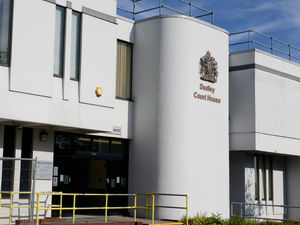Fears police may have misused stop and search powers - as just 10% searches result in arrests
Just 10 per cent of stop and search operations by Staffordshire Police resulted in arrests, cautions or warnings in a year, prompting fears officers have misunderstood the powers or used them 'inappropriately', a review has revealed.

Staffordshire's Police and Crime Commissioner Matthew Ellis asked an independent panel, launched to make policing more transparent, to carry out the study.
The ethics, transparency and audit panel has now made a series of recommendations to the force based on the findings.
A report has revealed that Staffordshire Police recorded 15,008 stop and search encounters from April 2013 and March 2014, but only 10 per cent of these searches amounted to arrests, cautions or warnings issued.
In Tamworth and Lichfield, the figure was four per cent, while in Stoke-on-Trent it reached 20 per cent.
The report said: "There should be some legitimate concern over these low rates, as it infers that some officers misunderstand the grounds for a lawful search, failed to realise that stop and search is not an automatic police right, or have exercised those powers inappropriately."
It said encounters based on a 'hunch' were unlawful and currently there was no formal way of recording whether the initial grounds were successful and items such as knives and drugs had been recovered.
Within the same time frame, 2,879 juveniles were searched, leading to 182 - just six per cent - being arrested and detained.
The youngest person searched was nine.
The report said around a quarter of juvenile arrest offences had been recorded as 'other', lacking information on why they were searched.
It was highlighted as an area of concern affecting the most vulnerable in society.
According to the report, officers rarely used body cameras to record the searches, despite guidance to do so.
It also said there were indications that many officers did not understand the grounds for searches, including the rights of the individual and the proper completion of reports.
A series of recommendations have been made including to assign a single department to be responsible for the overall process and recording complaints centrally.
It called on Staffordshire Police to use social media to publish quarterly data of stop and search encounters, including arrest rates and other outcomes, and for a better directed use of intelligence.
There were also recommendations to consider a public campaign to inform communities about their rights and a retraining scheme for officers.
Mr Ellis said: "This report makes several important practical recommendations about how stop and search can be used better to improve public confidence and accountability. Transparency can be enhanced further through the regular use of bodycams by officers to provide a clear record of each encounter."
Staffordshire Police's Assistant Chief Constable Bernie O'Reilly welcomed the report and reassured the community that any issues would be addressed.
He said: "The use of stop and search is an important tactic for our officers dealing with local crime issues, but it's also vital that our communities have confidence that we are using it in a fair and proportionate way.
"It is worth noting that Staffordshire Police receive a very small number of complaints about our use of stop and search, in the last three years we have received only 19 complaints."





